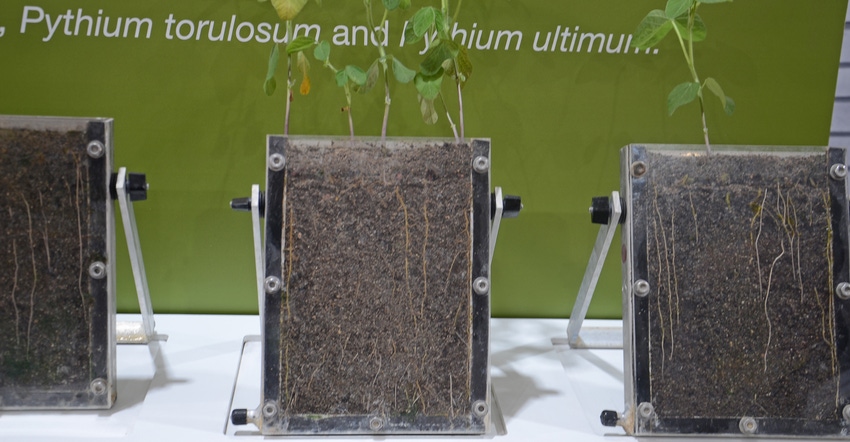
Soybean seed treatments are important to Dale Ireland. As technical product lead for Seedcare for Syngenta, he has devoted a good share of his career to finding the most effective ways to control diseases and other pests that threaten soybean stands.
Saltro fungicide seed treatment was a big breakthrough, because it offers advanced protection against sudden death syndrome and also has activity on soybean cyst nematodes, he notes. In 2021, EPA approved registration for Vayantis fungicide corn seed treatment containing a novel active ingredient that is extremely effective against Pythium and Phytophthora species.
Pythium and phytophthora root rot are two of the most common fungi that threaten germinating soybean seedlings in the Midwest, Ireland says. Currently, Syngenta is awaiting registration for a new seed treatment, which includes the active ingredient picarbutrazox from Vayantis. When registered, the new multi-purpose seed treatment will be called CruiserMaxx APX.
“The new active ingredient in Vayantis brings a lot to the table,” Ireland says. “Once registered, the new CruiserMaxx APX will deliver outstanding control of Pythium and Phytophthora species, plus good control of other diseases and pests.”
Why seed treatments today
Two trends that have emerged in soybean production in the past decade make seed treatments more critical to ensuring adequate stands of soybeans at harvest, Ireland says. Here is a closer look:
Earlier soybean planting. Once upon a time not so long ago, most farmers were satisfied if they had all their soybeans planted by Memorial Day in May. Many didn’t start planting until early May, and as recently as 15 years ago, some university agronomists still recommended mid-May as the best time to plant soybeans.
Data from newer university studies, seed companies and farmer experiences have reversed that picture, Ireland says. Today, many growers begin planting soybeans in early to mid-April. The goal for most farmers today is to plant soybeans in April and May. For some, that means planting at least some soybeans before they plant corn. For others, it means planting soybeans and corn at the same time.
“When you’re planting early, you are typically planting into cooler, wetter soils compared to 20 years ago,” Ireland says. “Even if conditions are good at planting, there is a higher risk of cooler, wetter weather setting in before soybeans are well established.
“These same conditions favor diseases such as pythium and make it critical to use effective soybean treatments.”
Lower seeding rates. While more growers are planting soybeans earlier than in the past, they are also planting them at lower populations. Again, research by universities, seed companies and others indicates that lower plant populations than in the past can yield as well or better with today’s varieties.
“Even people who were seeding 140,000 to 160,000 seeds per acre are looking at 110,000 to 120,000 seeds per acre today,” Ireland says. “If you’re going to tighten down seeding rates, you need to be proactive about protecting every seed. It’s another reason seed treatment plays an even bigger role than in the past.”
About the Author(s)
You May Also Like




